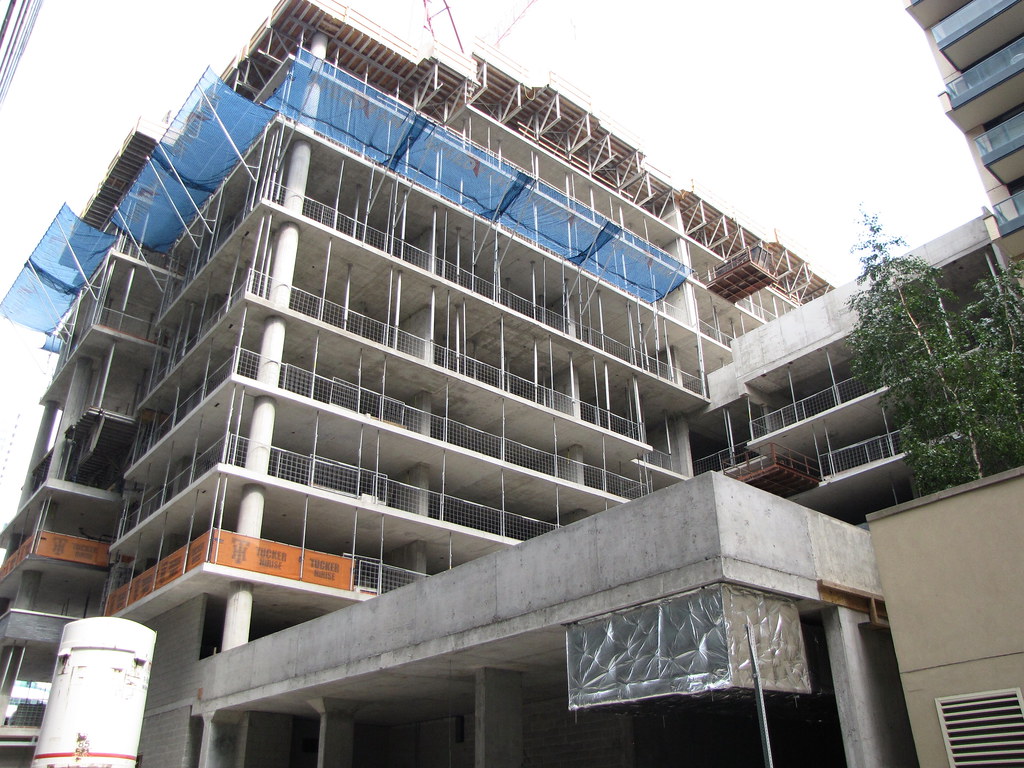out of curiosity, i checked the layouts which were affected by charlie. it seems that the following layouts have the corresponding windows blocked:
Louis Armstrong 760 sq ft
-2nd bedroom
-1 of 2 living/dining room windows
Diana Krall I 889 sq ft
-2nd bedroom
-1 of 2 living/dining room windows
Diana Krall II 1042 sq ft
-2nd AND 3rd bedrooms
-1 of 2 living/dining room windows
does this mean it's violating code? (if not it's probably because i don't fully understand what "else in the interior facing the nearest exterior wall (at 40% coverage)" means.)
I stand corrected from my previous statement that the windows facing the Charlie site were of a more 'accessory' nature.
The OBC's scope quite reasonably cannot cover construction outside of the property in question. An exterior window is an exterior window as defined by the OBC, so while Charlie now presents a blank wall only a few feet away these Hudson suites are still in conformance as they pertain to the daylighting requirements (which is to say, they still have exterior windows).
What people are reacting to here is that clearly not every window will allow the same degree of light penetration to the interior and in cases like this it can be quite a low level of light. The developer did not disclose the possibility of future construction shadowing or obscuring those windows, and it is not a requirement that they ought to do so. They could have sold these as 1-bdrm + den units instead of 2-bdrm units, and that may have been more honest in the eyes of some.
But the reality is that Charlie was not even on the drawing board when the Hudson units were being sold, and it could have been decades before the windows were hidden by a neighbour. We've had 10-12 years of unprecedented growth in this city (especially in the condo market) and only now are the windows being hidden. It might easily have been much longer before that site was developed.
So it wasn't the most altruistic thing in the world to sell these units as 2-bedrooms but it certainly wasn't
wrong either. In the end, you're left with 'caveat emptor' as always. The responsibility is on the purchaser to assess the situation fully and to understand that empty lots - especially unpaved parking lots in the downtown core - usually don't stay that way for long.















